
Death Rally is a vehicular combat racing video game developed by Remedy Entertainment, published by Apogee Software and distributed by GT Interactive. Originally known as HiSpeed during development, it was released on 7 September 1996 for MS-DOS. In the game, the player starts with $495 and a weak car named Vagabond, and must compete in deadly races where all cars are armed. The player wins money by finishing in front positions, collecting money bonuses during the race, fulfilling missions and destroying other cars. The ultimate goal of the game is defeating the "Adversary", the undisputed king of Death Rally, in a one-on-one race.

Tom Clancy's H.A.W.X is an arcade flight video game developed by Ubisoft Bucharest and published by Ubisoft for Microsoft Windows, Xbox 360 and PlayStation 3, and by Gameloft for BlackBerry PlayBook, iOS, Palm Pre, Android and Symbian^3. It was released for Xbox 360 and PlayStation 3 in North America on March 3, 2009, for Windows on March 17, for iOS on December 9, for BlackBerry on January 8, 2010, for Palm Pre on April 2, for Android on September 13, and for Symbian on January 16, 2011. A Wii version was announced, but was ultimately canceled. In September 2010, a sequel titled Tom Clancy's H.A.W.X 2 was released for Xbox 360 and PlayStation 3. The Microsoft Windows and Wii versions were released in November 2010. In November 2018, Tom Clancy's H.A.W.X was added to the Xbox One's Backwards Compatibility list although only through physical media as it is not available on the Xbox Marketplace.

Cro-Mag Rally is a kart racing game developed by Pangea Software and published by Aspyr, which takes place in caveman times. It was originally released for Mac OS 9 and Mac OS X, and was later ported to iOS, Xbox 360, Android, and Windows Phone 7.

Modern Combat: Sandstorm is a 2009 first-person shooter video game developed by Gameloft Montreal and published by Gameloft for Android, iOS, webOS, and Bada. It is the first installment in the Modern Combat series and was followed by 2010's Modern Combat 2: Black Pegasus. The game is set in the Middle East.
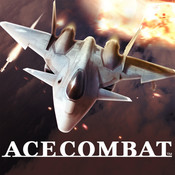
Ace Combat Xi: Skies of Incursion was a 2009 combat flight simulation video game developed and published by Namco Bandai Games for iOS.
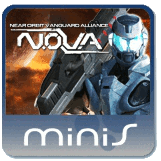
N.O.V.A. Near Orbit Vanguard Alliance is an action-adventure video game for the iPad and other Apple products made for Apple by Gameloft. It was released on December 17, 2009, for iOS, WebOS and is one of the games containing the Gameloft Live online gaming service. It was later released on the PlayStation Network for the PlayStation Portable and PlayStation 3 on December 21, 2010, just five days after the release of N.O.V.A. 2. N.O.V.A Legacy, a remaster of the original N.O.V.A. developed by Gameloft Madrid, was also released for Android on the Google Play Store in 2017 and on iOS App Store in 2018.

Modern Combat 2: Black Pegasus is a 2010 first-person shooter developed and published by Gameloft for iOS, Android, Xperia Play and BlackBerry PlayBook devices as part of the Modern Combat series. It is a sequel to 2009's Modern Combat: Sandstorm, and features new environments, updated graphics and more robust multiplayer. A sequel was released in 2011, titled Modern Combat 3: Fallen Nation. This was followed by 2012's Modern Combat 4: Zero Hour and 2014's Modern Combat 5: Blackout.

Tom Clancy's Rainbow Six: Shadow Vanguard is a 2011 first-person shooter video game developed and published by Gameloft for iOS, Xperia Play and Android devices. The game is a remake of the original Tom Clancy's Rainbow Six video game.

Modern Combat 3: Fallen Nation is a 2011 first-person shooter developed and published by Gameloft Montreal for iOS, Android, Bada 2.0 and BlackBerry PlayBook devices. It is the third game in the Modern Combat series, and is a sequel to 2009's Modern Combat: Sandstorm and 2010's Modern Combat 2: Black Pegasus. The fourth part of the series, Modern Combat 4: Zero Hour, was released in 2012, and the fifth, Modern Combat 5: Blackout, in 2014. The game is set in 2028 where North Korea, Russia and Pakistan join forces to invade the United States of America, thus causing a global war.

Brothers in Arms 2: Global Front is a 2010 World War II-era first-person shooter video game for iOS and Android, developed and published by Gameloft. It was released on the App Store on February 22, 2010. and is part of the Brothers in Arms series.

Avernum: Escape from the Pit is a role-playing video game developed by Spiderweb Software. It is the first game in the remade Avernum First Trilogy and the second ground-up rewrite of Exile: Escape from the Pit, released in 1995. The game was re-released as a graphics and game engine update, and it addressed Avernum incompatibilities with newer versions of Mac OS X 10.7 Lion and newer.
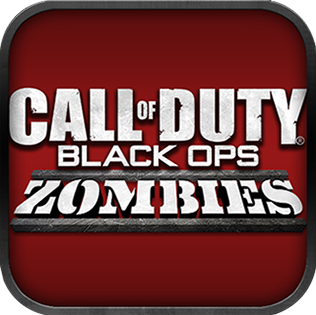
Call of Duty: Black Ops – Zombies is a spin-off game of the Call of Duty series' Zombies mode and the sequel to Call of Duty: World at War – Zombies. Developed by Ideaworks Game Studio and published by Activision for the iOS and Android platforms, it was launched in select countries on December 1, 2011.

Dead Space (also referred to as Dead Space: Sabotage or Dead Space (mobile)) is a 2011 survival horror mobile game developed by Australian company IronMonkey Studios and published by Electronic Arts for iOS and Android-compatible devices. A spin-off within the Dead Space series, the game is set after the events of original Dead Space and prior to the events of Dead Space 2 and shows how the Necromorph outbreak began and spread through the Titan Sprawl. Gameplay features protagonist Vandal navigating through chapter-based environments, fighting Necromorphs.
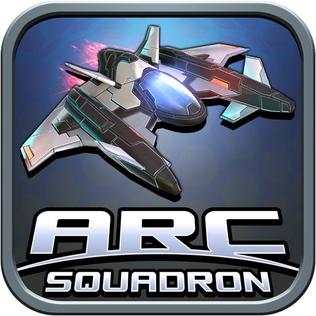
ARC Squadron is a 2012 space combat video game developed and published by Psyonix Studios for iOS. It was released on the App Store on 1 November 2012. Like Psyonix's previous game, Supersonic Acrobatic Rocket-Powered Battle-Cars, ARC Squadron runs on Unreal Engine 3. On 17 October 2013, ARC Squadron: Redux was released on iOS and Android, featuring improved graphics and performance as well as gameplay tweaks.

Call of Duty: Strike Team is a tactical shooter game developed by The Blast Furnace and was released on iOS and Android on September 5, 2013.

Dead Effect is a first-person shooter video game developed by inDev Brain and published by BulkyPix for iOS and Android. It was released on September 12, 2013 for iOS, and on October 15 for Android. Initially available in the App Store and Google Play for purchase, the game switched to a freemium model in February 2014, with the inclusion of in-app purchases. On February 20, 2014, the game was greenlit for Steam. An early access version was released for Windows and OS X on April 15, with the game going gold on December 17. The game has received mixed to positive reviews, and has been downloaded over three million times. A sequel, Dead Effect 2 was released on October 29, 2015.
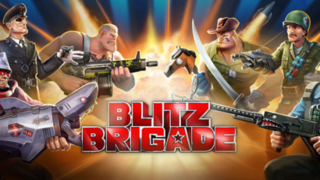
Blitz Brigade was a multiplayer first-person shooter video game developed and published by Gameloft for iOS, Android, and Windows Phone. It shut down their servers in December 2023.

Modern Combat is a series of shooter video games developed and published by Gameloft mainly for Android and iOS. All installments in the series play similarly to that of the Call of Duty and Battlefield franchises and feature multiple missions in varied environments with different tasks for players to complete. The main enemies in the games are terrorists, and often, the player is accompanied by other soldiers who fight alongside them. Modern Combat: Sandstorm is the first game in the Modern Combat series and was followed by 2010's Modern Combat 2: Black Pegasus, 2011's Modern Combat 3: Fallen Nation, 2012's Modern Combat 4: Zero Hour, 2014's Modern Combat 5: Blackout, and 2017’s Modern Combat: Versus.

Modern Combat 5: Blackout is a 2014 first-person shooter developed by Gameloft Bucharest and published by Gameloft. It is the fifth installment of the Modern Combat series and the sequel to Modern Combat 4: Zero Hour. It was released on July 24, 2014 for iOS, Android, Windows Phone 8, Windows 8.1 and BlackBerry 10, on October 24, 2018 for Windows via Steam, and for Nintendo Switch on February 14, 2019. It is the first game in the series that is developed by Gameloft Bucharest.

Worms 4 is a turn-based tactics video game developed and published by Team17. It was released for iOS and Android devices on September 3, 2015.




















